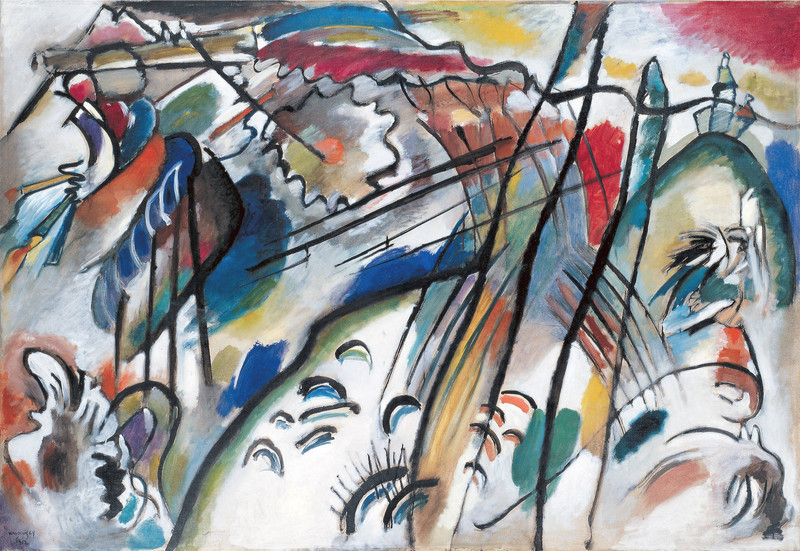Kandinsky 1911–1913
25 Jun 2012 - 25 Apr 2013

Vasily Kandinsky
Improvisation 28 (second version) (Improvisation 28 [zweite Fassung]), 1912 (detail).
Oil on canvas
111.4 x 162.1 cm.
Solomon R. Guggenheim Museum, New York, Solomon R. Guggenheim Founding Collection, By gift 37.239. © 2012 Artists Rights Society (ARS), New York/ADAGP, Paris
Improvisation 28 (second version) (Improvisation 28 [zweite Fassung]), 1912 (detail).
Oil on canvas
111.4 x 162.1 cm.
Solomon R. Guggenheim Museum, New York, Solomon R. Guggenheim Founding Collection, By gift 37.239. © 2012 Artists Rights Society (ARS), New York/ADAGP, Paris
KANDINSKY 1911–1913
25 June 2012 – 25 April 2013
Perhaps more than any other 20th-century painter, Vasily Kandinsky (b. 1866, Moscow; d. 1944, Neuilly-sur-Seine, France) has been closely linked to the history of the Guggenheim Museum. Hilla Rebay—artist, art advisor, and the museum’s first director—promoted nonobjective painting above all other forms of abstraction. She was particularly inspired by the work and writing of Kandinsky, a pioneer of abstraction, who believed that the task of the painter was to convey his own inner world, rather than imitate the natural world. The museum’s holdings have grown to include more than 150 works by Kandinsky, and focused exhibitions of his works are presented in the Kandinsky Gallery on Annex Level 3. The current installation, Kandinsky 1911–1913, highlights paintings completed at the moment the artist made great strides toward complete abstraction and published his aesthetic treatise, On the Spiritual in Art (1911, though dated 1912). Also featured are paintings by Robert Delaunay and Franz Marc that were exhibited alongside the work of Kandinsky and others in the landmark 1912 Der Blaue Reiter (The Blue Rider) exhibition held at the Moderne Galerie Heinrich Thannhauser in Munich.
25 June 2012 – 25 April 2013
Perhaps more than any other 20th-century painter, Vasily Kandinsky (b. 1866, Moscow; d. 1944, Neuilly-sur-Seine, France) has been closely linked to the history of the Guggenheim Museum. Hilla Rebay—artist, art advisor, and the museum’s first director—promoted nonobjective painting above all other forms of abstraction. She was particularly inspired by the work and writing of Kandinsky, a pioneer of abstraction, who believed that the task of the painter was to convey his own inner world, rather than imitate the natural world. The museum’s holdings have grown to include more than 150 works by Kandinsky, and focused exhibitions of his works are presented in the Kandinsky Gallery on Annex Level 3. The current installation, Kandinsky 1911–1913, highlights paintings completed at the moment the artist made great strides toward complete abstraction and published his aesthetic treatise, On the Spiritual in Art (1911, though dated 1912). Also featured are paintings by Robert Delaunay and Franz Marc that were exhibited alongside the work of Kandinsky and others in the landmark 1912 Der Blaue Reiter (The Blue Rider) exhibition held at the Moderne Galerie Heinrich Thannhauser in Munich.
